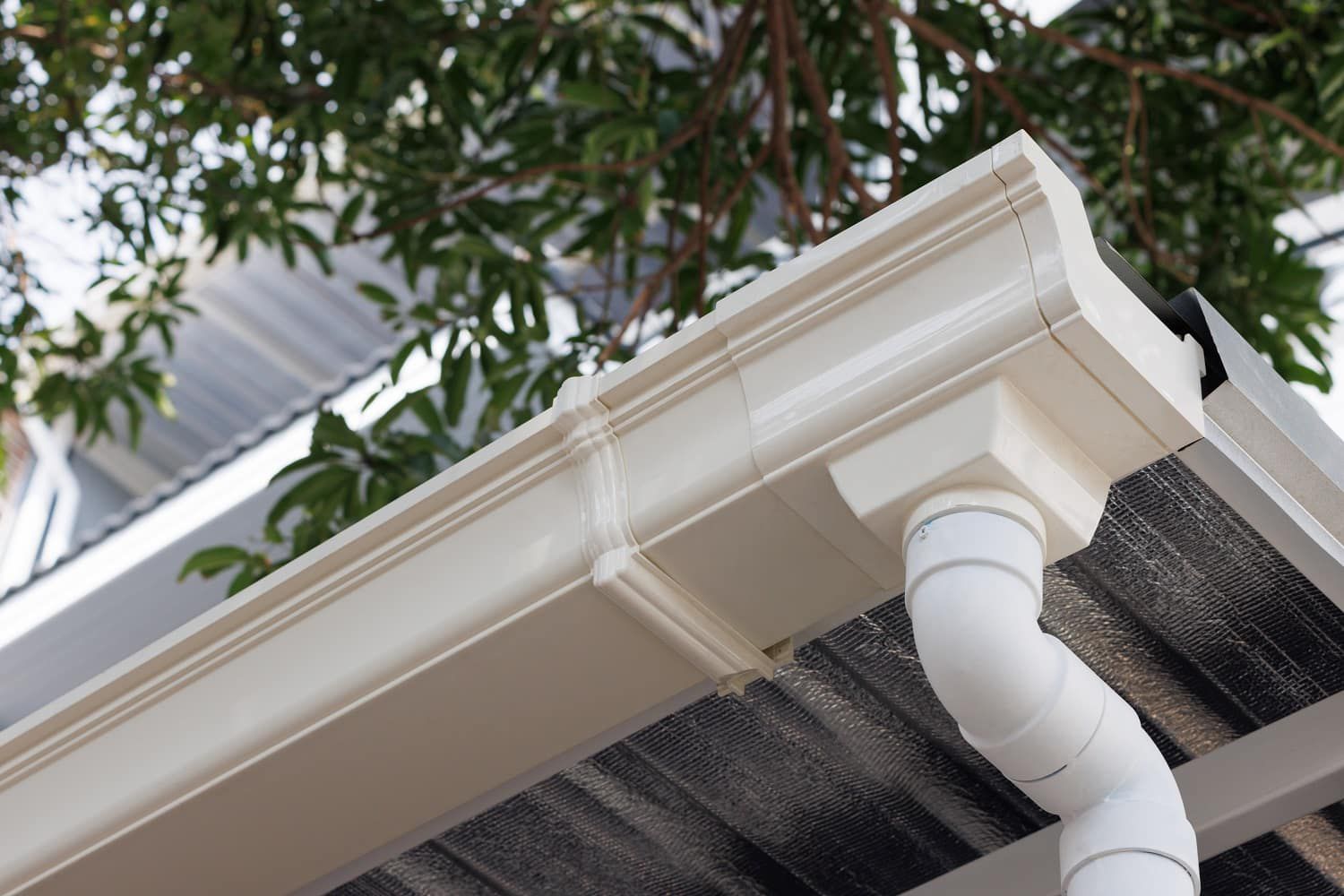Properly managing rainwater runoff is critical for protecting your home from water damage. Key to an effective rainwater management system are gutters and downpipes that efficiently collect and redirect water away from the house. When selecting guttering and downpipes, you need to consider factors like climate, roof size, pitch, and personal preference to find the best option for your home.
Guttering types
Gutters come in a variety of materials, shapes, and sizes.
- Steel – Strong, long-lasting but heavier than aluminum. Prone to rusting. Galvanized and colorbond options are available.
- Vinyl – Plastic gutters that are lightweight and corrosion-resistant. Affordable but less durable than metal gutters. Limited color options.
- Copper – Beautiful natural patina over time. Very durable but expensive.
- Zinc/Titanium – Extremely durable metals with long lifespans. Higher cost but low maintenance.
Consider climate factors like snow load and rainfall intensity when selecting gutter materials and shapes. Copper or zinc gutters will withstand heavy snow, while box-shaped gutters are less prone to snow damage. Look for large-capacity gutters if you live in a high-rainfall area.
Downpipe types
Like gutters, downpipes (also called drainpipes or rainwater pipes) come in a variety of shapes, sizes and materials:
- Round downpipes effectively direct rainwater from gutters to the ground. Available in plastic and metal.
- Square downpipes suit homes with modern architecture and complement square gutters. Made from aluminum, copper, or zinc.
- Rectangular downpipes are less common but useful for directing water to narrow spaces. Made from sheet metal.
Plastic downpipes are affordable and easy to install but prone to damage from ladders and lawnmowers. For longevity, opt for durable metals like galvanized steel, copper, or zinc. Make sure the water flow capacity matches your gutter size.
Managing the rainwater flow is also important to prevent flooding and erosion. Downpipes should be an outlet at least 1 meter from your home’s foundation, directing water away from the house. Connecting downpipes to underground pipes that lead to pits, tanks, or stormwater drains is ideal. It keeps water from pooling near foundations. When downpipes handle large volumes, add straps or brackets every 1.5 – 3 meters for support. Any sagging can obstruct water flow. Don’t forget that every corner or bend in your downpipes slows the flow of water. Limit bends where possible, keeping the downpipe as straight and vertical as your design allows.
The number and placement of downpipes needed depends on your roof size, pitch, and gutter capacity. A good rule of thumb is to have a downpipe for every 20 meters of gutters near the end of gutter runs. Steeper roofs above 30 degrees pitch require more downpipes to quickly remove the water. Proper rainwater collection and drainage are crucial for protecting your home. Consider enlisting a qualified home drainage specialist if you are unsure about the exact guttering and downpipe requirements for your roof size, shape, and rainfall levels. They assess your situation and recommend the ideal setup. Installing well-designed gutters and downpipes guards your home from water damage. While upfront costs vary based on materials, the proper investment now prevents much more expensive and experienced in gutter repairs later on.

